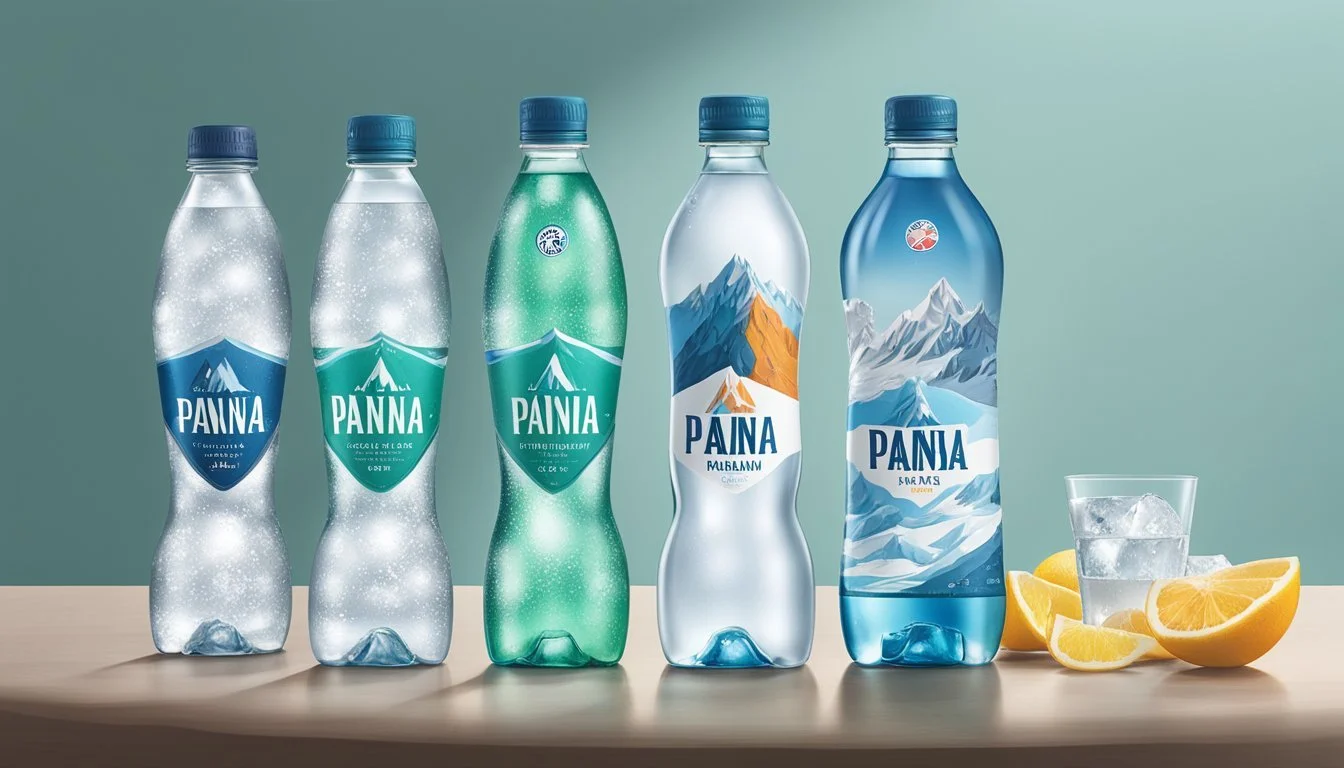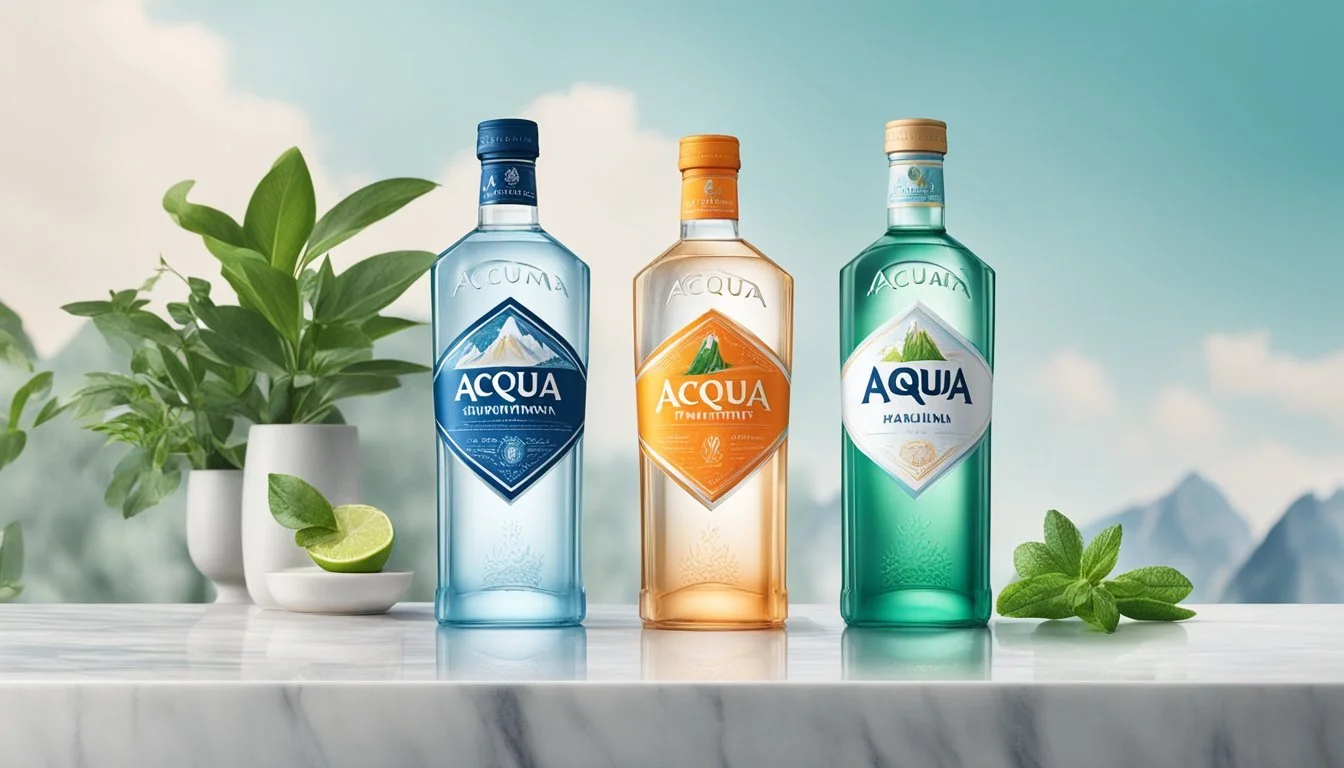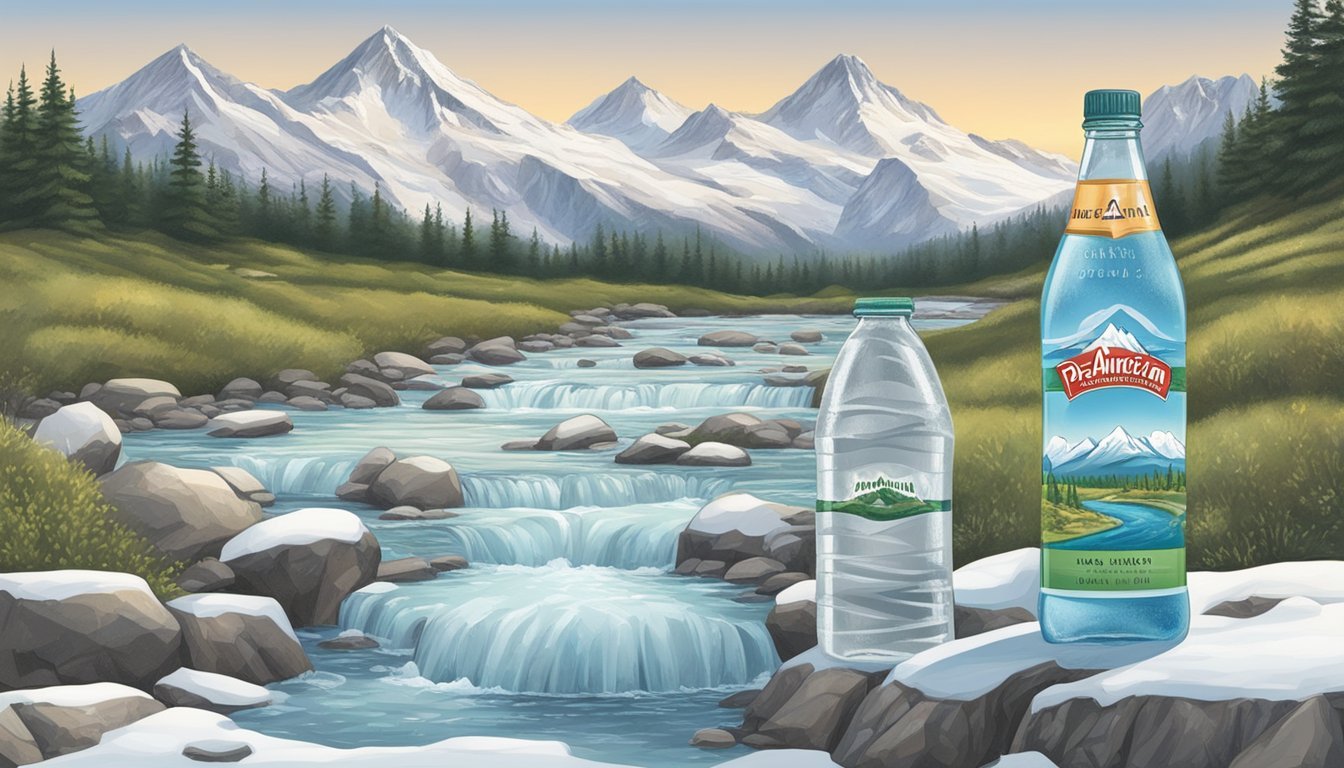Acqua Panna vs. Ice Mountain
Comparing Quality and Taste in Bottled Water
Comparing different brands of bottled water, such as Acqua Panna and Ice Mountain, is becoming increasingly important to health-conscious consumers who value hydration with a taste of purity. Acqua Panna, sourced from the sun-drenched hills of Tuscany, boasts a legacy dating back to 1564. This natural spring water is renowned for its balanced taste and history of savor, making it a premium choice in fine dining establishments.
On the other hand, Ice Mountain is known for its accessibility and affordability, catering to those who prefer a domestic product. Originating from several natural springs in the Midwest United States, Ice Mountain is often credited for its clean and refreshing taste that resonates with a broad customer base. The brand emphasizes its commitment to sustainability and community initiatives, which appeals to consumers mindful of environmental impact.
Investigating the qualities of Acqua Panna and Ice Mountain, from source to sip, this article will provide consumers with the necessary information to make an informed choice about their bottled water. It will examine the nuances that set each apart, including the taste profile, source of water, and the environmental practices of both brands. With hydration being key to a healthy lifestyle, understanding the differences between these two bottled water brands could influence consumer preferences and purchasing decisions.
Understanding Bottled Water
When selecting bottled water, consumers often consider taste and purity which are influenced by the sources, bottling process, and regulatory standards.
Types and Sources
Bottled water comes in various types, each defined by its source and treatment. Natural spring water and mineral water are drawn from protected underground sources such as springs or artesian aquifers, rich in natural minerals and typically requiring minimal treatment. Groundwater originates from subsurface aquifers but may lack the mineral content of spring water. Artesian water is collected from wells tapped into confined aquifers where water is under positive pressure. In contrast, municipal water, also known as tap water, is processed from sources like rivers or reservoirs, and often undergoes treatments such as reverse osmosis and filtration to meet safety standards.
Bottling Process
The journey from source to bottle involves multiple steps ensuring safety and maintaining water quality. It begins with extraction, where water is drawn from its source, whether it be natural springs or groundwater. The water may undergo natural filtering through geological formations and further purification involving reverse osmosis to remove contaminants, and sometimes filtration to eliminate physical impurities. Some brands infuse their water with additional oxygen or adjust pH levels for a more alkaline or neutral profile. Additionally, various brands add electrolytes and minerals to enhance taste and health benefits.
Regulations and Standards
Bottled water companies must adhere to strict regulatory standards to ensure safety and quality. In the United States, the Environmental Protection Agency (EPA) regulates tap water, while the Food and Drug Administration (FDA) oversees bottled water. This includes standards for contaminant levels, filtration methods, and reporting. Independent state entities, such as the California Department of Public Health, may enforce additional standards. The EPA mandates regular testing for substances like lead or mercury, while standards for bottled water often focus on ensuring the absence of harmful microorganisms and maintaining consistent mineral content.
Acqua Panna: Tuscany’s Finest
Acqua Panna is revered for its origin in the picturesque region of Tuscany and its refined taste profile. It has established itself as a premium water choice, often compared with other renowned brands like Voss and San Pellegrino.
Origin and History
Acqua Panna finds its source nestled in the Tuscan hills, within the historically rich Villa Panna estate. Its origins date back to 1564, and since then, it has been associated with the Medici family's reserve—a nod to its noble heritage. The water journeys through the underground aquifer for 14 years, emerging as a natural artesian spring at the Alfus Spring.
Mineral Content and Taste Profile
Acqua Panna's mineral content is characterized by a blend of calcium, magnesium, and other essential minerals, contributing to its smooth and unique taste. The following table illustrates its mineral composition compared to average bottled waters:
Mineral Acqua Panna (mg/l) Average Bottled Water (mg/l) Calcium 32 50-80 Magnesium 8 10-30
The distinct mineral content provides Acqua Panna with a notable flavor profile that sets it apart from its counterparts. It has a velvety smoothness on the palate, making it not just a hydrating choice, but also a complement to fine dining experiences.
Ice Mountain: Pure American Spring
Ice Mountain Natural Spring Water is known for its refreshing taste and purity, sourced from the heart of America. Its reputation is built on the natural origins and the absence of artificial additives, delivering a clean flavor profile that many consumers trust.
Source and Authenticity
Ice Mountain derives its water from carefully selected springs in the United States, specifically in the Midwest where the brand has multiple sources. This includes springs in the Ouachita Mountains, where the natural filtration through mineral-rich aquifers contributes to the purity and mineral composition of the water. Ice Mountain is committed to sustainability, ensuring that its water extraction methods do not harm the surrounding ecosystems and are continuously monitored for environmental impact.
Flavor and Chemical Composition
The flavor of Ice Mountain Natural Spring Water is often described as fresh and clean, a direct result of the natural filtration process it undergoes within the springs. Ice Mountain boasts a balanced pH level that is typically neutral to slightly alkaline, which is preferred by consumers looking for a crisp taste without a heavy mineral influence.
Regarding chemical composition, Ice Mountain water contains naturally occurring minerals that contribute to its overall taste profile. These minerals also define the hardness of the water, although Ice Mountain is generally considered soft to moderately hard. This water is free from artificial sweeteners, colors, and preservatives, aligning with consumer demand for natural water that is untainted by additives.
Comparing Quality and Taste
When evaluating bottled water like Acqua Panna and Ice Mountain, it is essential to consider the objective measures of pH levels and alkalinity as well as the subjective experiences drawn from taste tests. These factors contribute significantly to the perception of quality in bottled waters, which may be comparable to renowned brands such as Evian and Fiji.
PH Levels and Alkalinity
Acqua Panna:
pH Level: Typically around 8.0
Alkalinity: Natural alkaline water due to its underground source
Ice Mountain:
pH Level: Close to 7.5
Alkalinity: Moderately alkaline with variations depending on the source
The pH levels of Acqua Panna and Ice Mountain suggest that they are both less acidic than typical tap water, with Acqua Panna being slightly more alkaline. This alkalinity can contribute to a smooth and silky mouthfeel, often compared to premium waters like Evian or Fiji.
Taste Test Results
Acqua Panna is known for its smooth and silky taste profile, often receiving high marks in blind taste tests. It lacks any distinct mineral aftertaste which can be found in some bottled waters. Conversely, Ice Mountain is frequently described as having a clean, crisp taste, indicative of its pure spring source. However, it may not exhibit the unique characteristics of some other brands like Fiji, which is known for its soft, yet distinctive taste due to the silica content.
Health and Hydration
When considering bottled water, consumers often look at how it contributes to health and hydration. This section provides insights into the hydration benefits of bottled water and the essential minerals it may contain.
Hydration Benefits
Hydration is vital for maintaining bodily functions, and both Acqua Panna and Ice Mountain offer this fundamental benefit. Acqua Panna boasts a smooth taste with a unique balance of minerals, enhancing hydration without any added electrolytes. In contrast, Ice Mountain is known for its straightforward, clean taste that promises effective hydration, given its natural source from spring water.
Minerals for Health
Mineral content can differ substantially between bottled water brands, influencing their health benefits.
Calcium: Important for bone health, both Acqua Panna and Ice Mountain contribute to daily calcium intake.
Magnesium: Essential for over 300 biochemical reactions in the body, magnesium is present in these waters, though levels can vary.
Other Minerals: While not explicitly mentioned in the search results, bottled waters like LIFEWTR and Essentia are known to include various minerals and electrolytes that support hydration and overall health.
Acqua Panna is naturally endowed with minerals from its Tuscan source, with a focus on its balanced and naturally occurring mineral composition. Ice Mountain, sourced from springs across the American Midwest, typically contains naturally occurring minerals like calcium and magnesium, but in varying amounts depending on the source.
Environmental Impact
When considering the environmental impact of bottled water brands like Acqua Panna and Ice Mountain, it's crucial to evaluate their use of bottle materials and sustainability practices.
Bottle Materials
Acqua Panna boasts its water is housed in glass bottles, which are often associated with an upscale market and can be recycled numerous times, thus reducing their environmental footprint. Their glass packaging option offers an alternative to plastic bottles, which are more commonly found but can be less eco-friendly due to the challenges with recycling plastic effectively.
Ice Mountain, on the other hand, primarily utilizes plastic bottles. While this choice can have negative environmental implications, the brand has taken steps to include recycled materials in their bottles. Innovations like lightweight plastic designs have also helped reduce the amount of plastic used per bottle, which is a step towards reducing environmental impact.
Sustainability Practices
Acqua Panna sources its water from a natural spring in Tuscany, and their bottling processes are geared towards preserving the surrounding environment. They filter their water through layers of volcanic rock, which naturally purifies the water without the need for additional chemicals. The brand aims for a carbon neutral status, reflecting their commitment to eco-friendly practices.
Ice Mountain emphasizes sustainability practices in the form of water stewardship and reducing carbon emissions. Their efforts in promoting recycling are notable, and they have shown intention to move towards more eco-friendly packaging solutions. Additionally, Ice Mountain offers boxed water in some regions, presenting an alternative to plastic that is designed to be more easily recyclable.
Both brands have shown an awareness of their environmental responsibilities and have implemented varying degrees of eco-conscious practices.
Market and Consumer Considerations
When consumers choose between bottled water brands, they often weigh factors like brand popularity and pricing, which can be influenced by the brand's market presence and association with larger corporations.
Brand Popularity
Acqua Panna, an Italian brand, is often associated with its premium market positioning and its parent company, Nestlé. It enjoys a certain cachet among consumers who prefer the perceived quality and taste of European spring waters. On the other hand, Ice Mountain, primarily sourced from springs across the Midwest, is backed by another beverage giant, Nestlé. It appeals to those seeking a high-quality regional option known for its reliable and consistent taste.
Popularity can be affected by factors such as:
Availability in stores like Costco
Inclusion in Coca-Cola, Nestlé, or Danone beverage line-ups, driving cross-brand loyalty
Pricing Comparison
With pricing as a point of consideration for many shoppers, both brands offer distinct value propositions. Acqua Panna is marketed as an upscale choice and is often priced higher to reflect its premium branding. Ice Mountain, while also produced by Nestlé, is typically more affordable and readily available, making it a convenient choice for consumers mindful of cost.
Comparative Pricing at Retailers (approximate):
Brand Price per 500ml bottle Acqua Panna $1.50 Ice Mountain $1.00
Note: Prices may vary based on location, offering, and current promotions at retailers like Costco.
Final Verdict
When choosing between Acqua Panna and Ice Mountain, consumers have distinct factors to consider that affect the recommendation and best uses for each brand.
Recommendations and Best Uses
Acqua Panna: Originating from Tuscany, it is a reliable brand known for its natural filtration through limestone hills. Acqua Panna is recommended for those seeking a premium water experience, often associated with fine dining or special occasions. The brand touts a heritage connected to natural hot springs and positions itself as a premium choice.
Best Uses:
Culinary pairings
Gourmet lifestyle
Special events
Ice Mountain: Sourced from multiple springs in the Midwest, Ice Mountain is a practical brand for daily hydration. It is suitable for individuals who prefer a straightforward, no-frills alternative to tap water. It is often more accessible and integrates seamlessly with a more casual, everyday lifestyle.
Best Uses:
Daily hydration
Sports and fitness
Family consumption
For users looking for tailored tips, Acqua Panna's sophistication fits those desiring a nuanced taste, while Ice Mountain caters to practicality and cost-effectiveness. Neither brand exaggerates its offerings, providing clear options for consumers based on their preferences and lifestyle needs.






